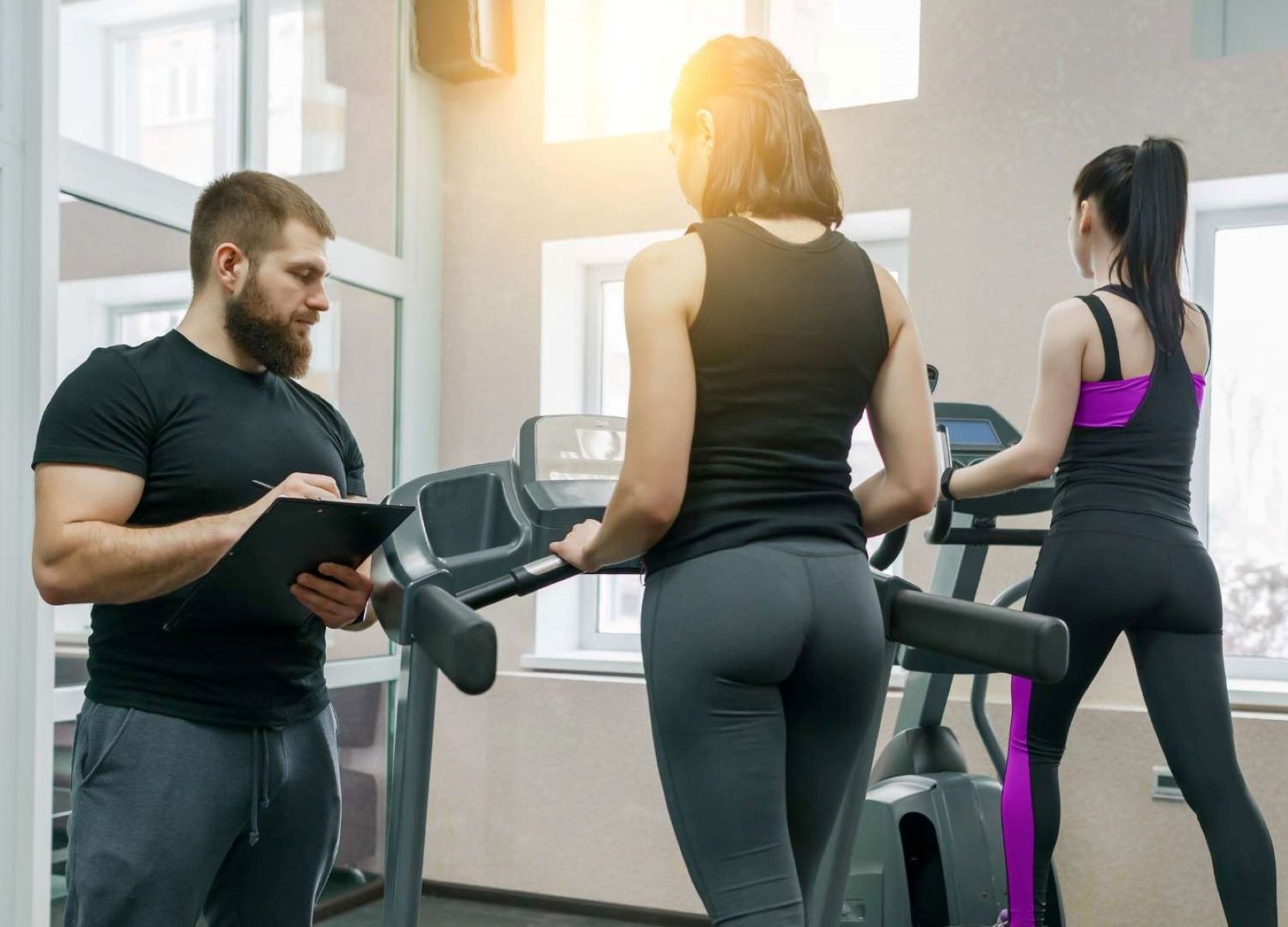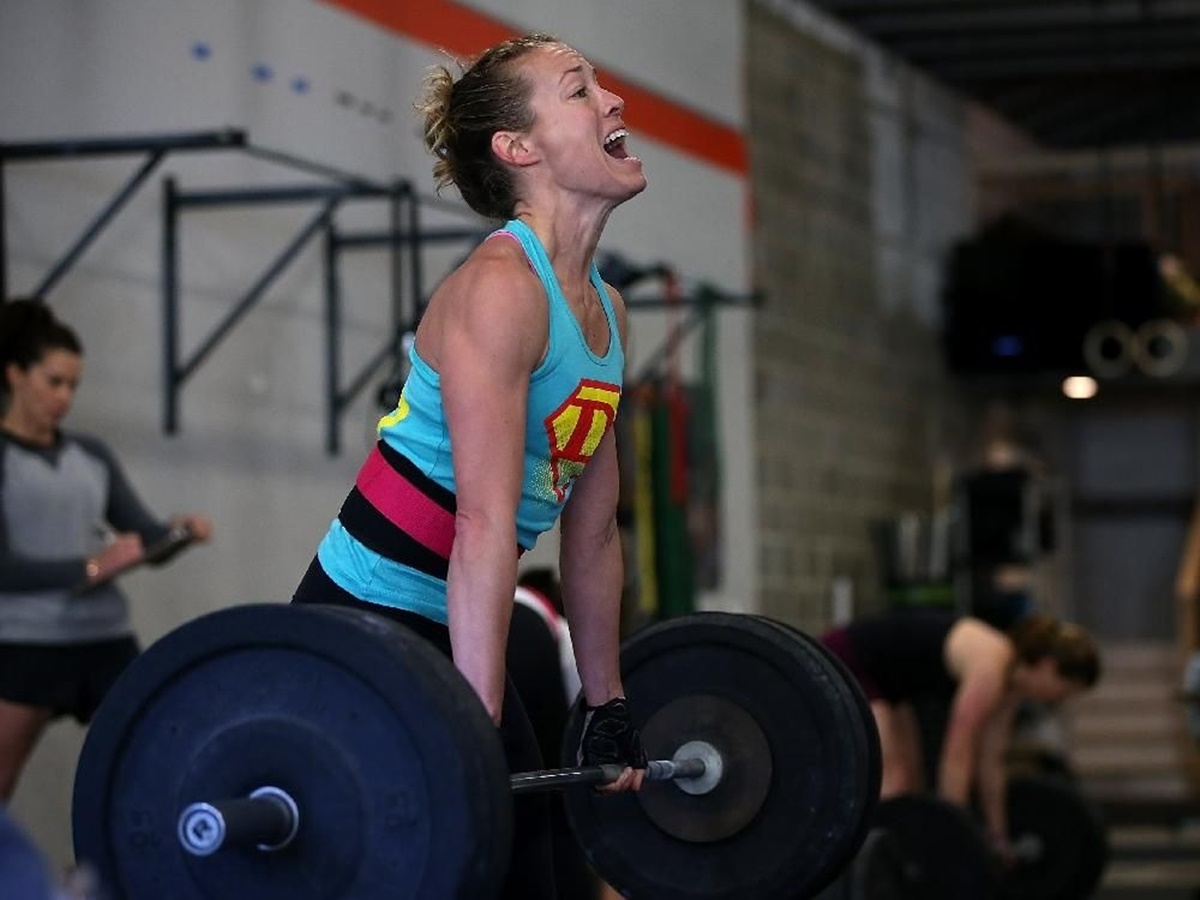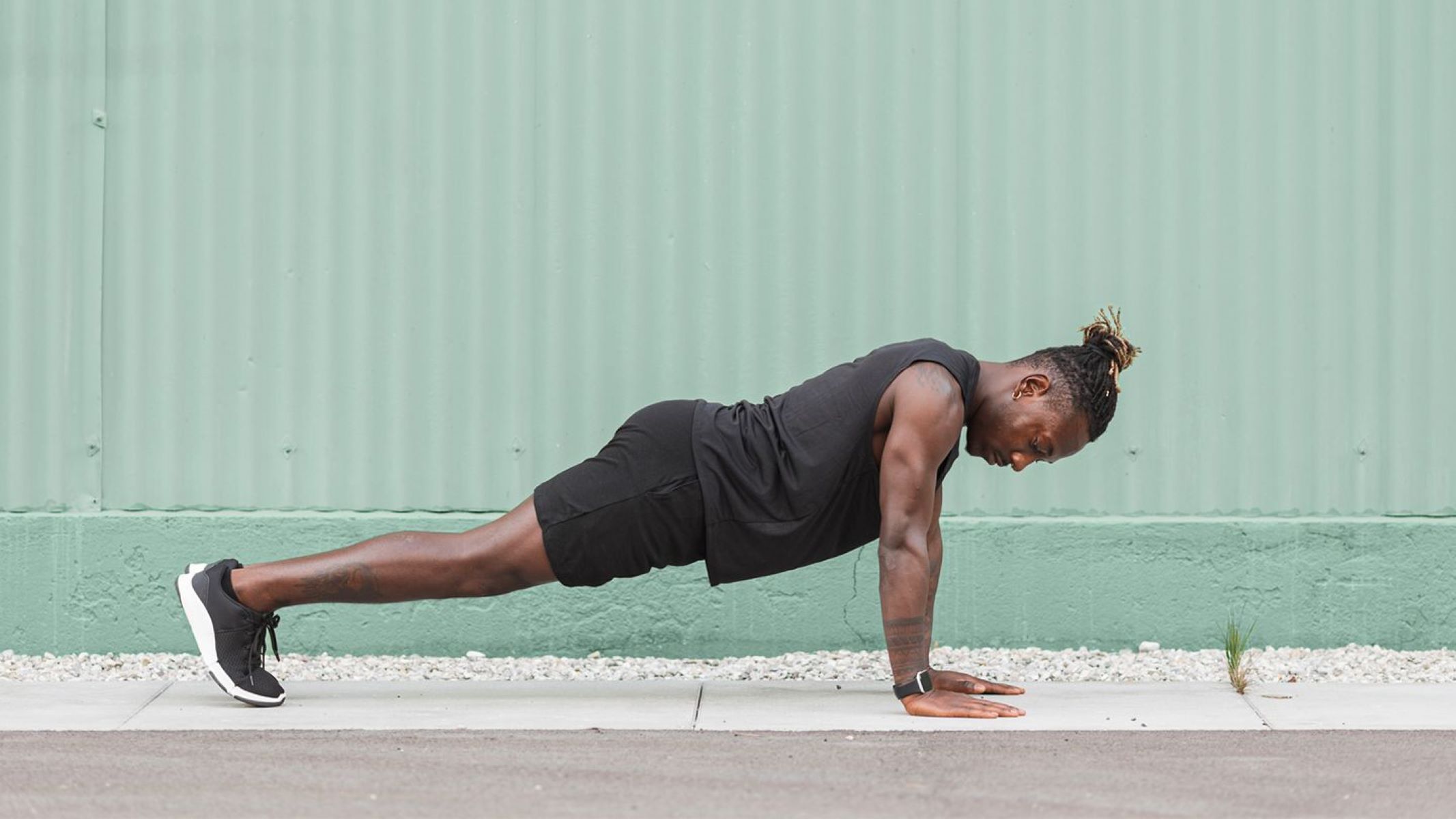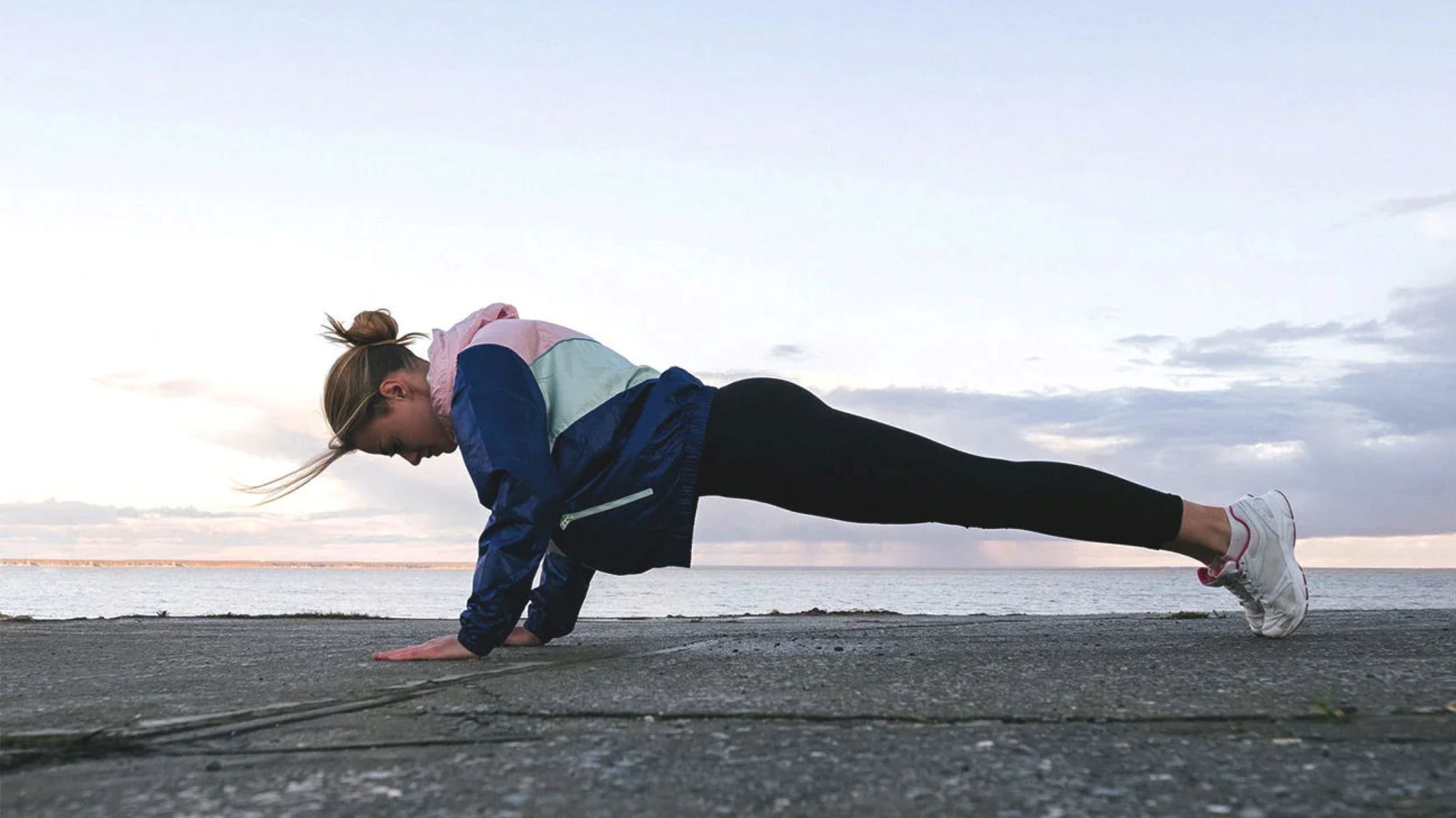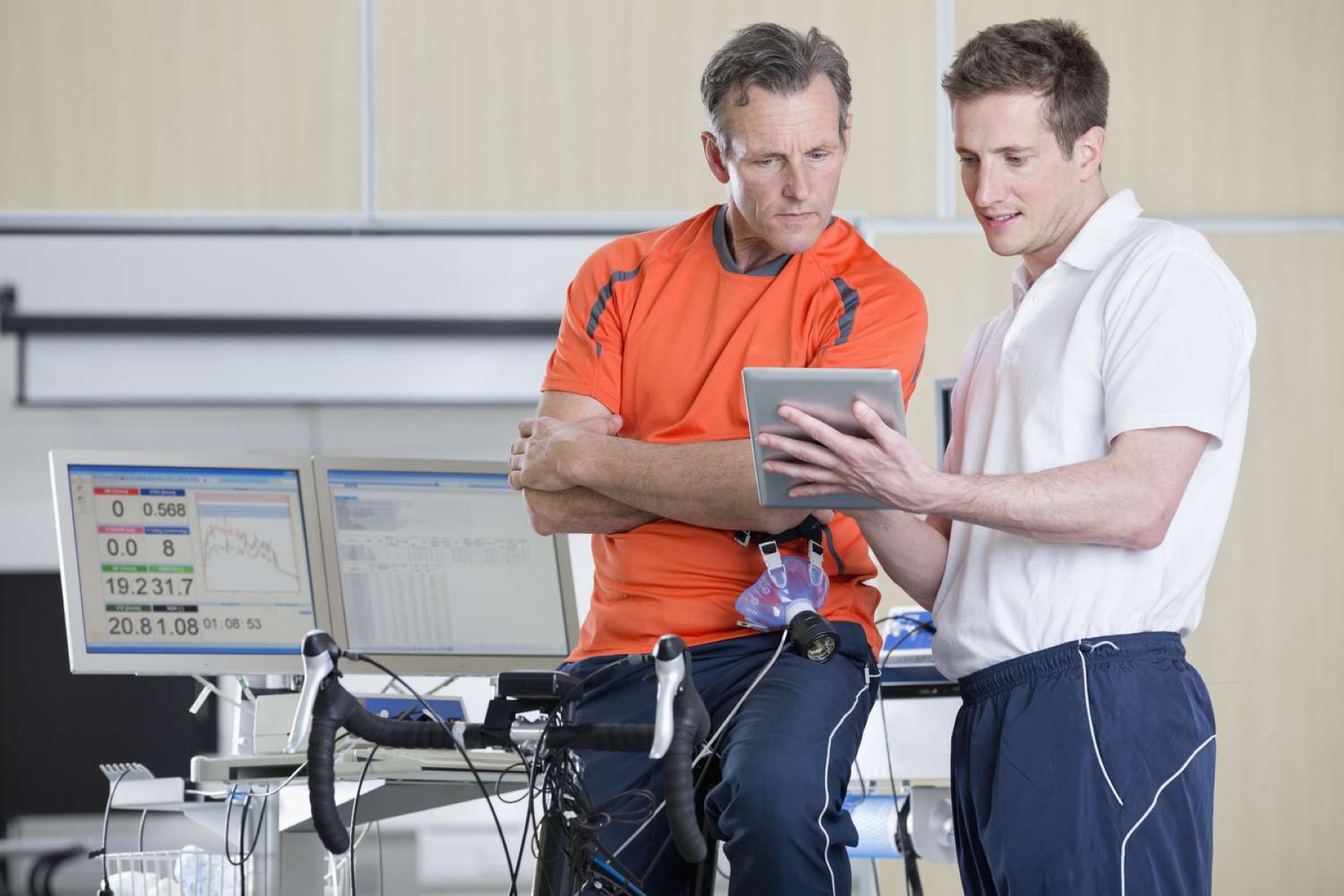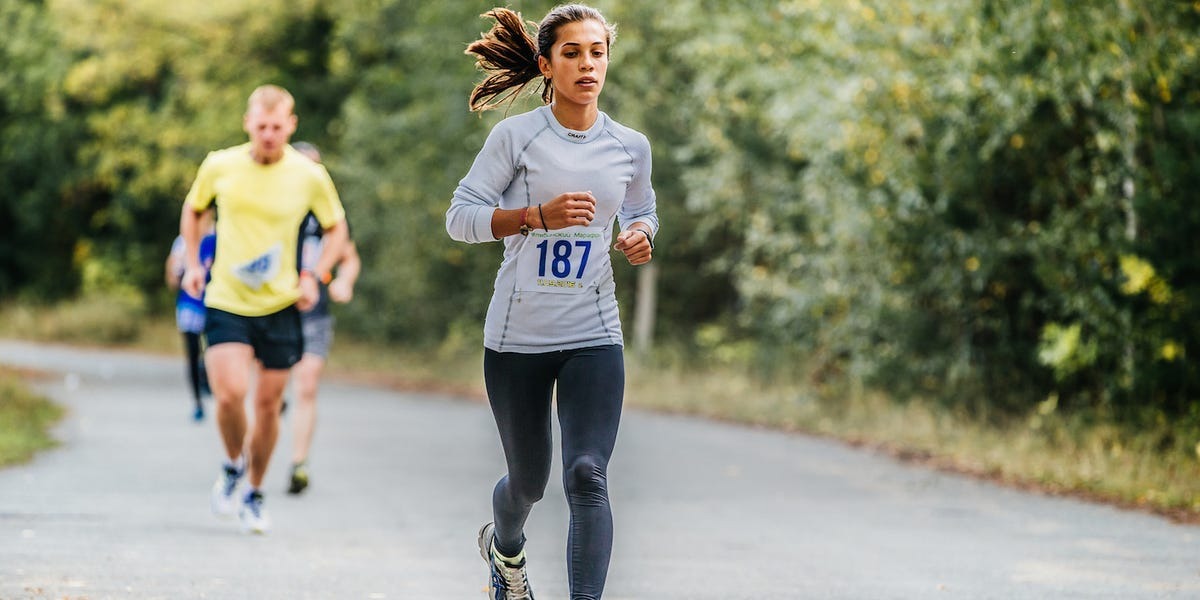Home>Misc>Featured>How Does Endurance Training Increase VO2 Max
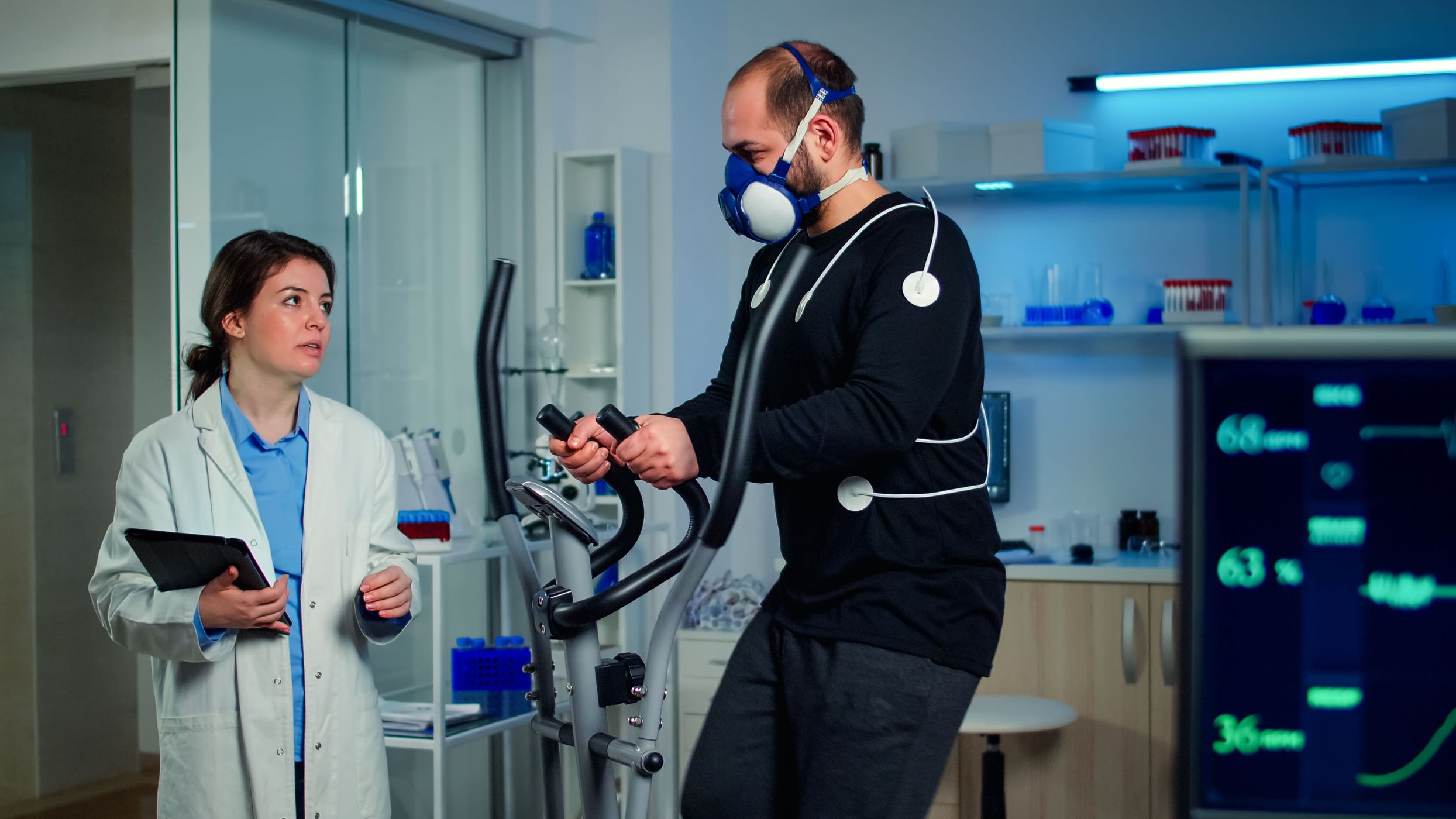

Featured
How Does Endurance Training Increase VO2 Max
Modified: January 22, 2024
Discover how endurance training can increase your Vo2 Max and improve your overall fitness. Learn the science behind it and the best exercises to enhance your endurance. Featured.
Introduction
When it comes to endurance sports and activities, one term that often comes up is VO2 max. Athletes and fitness enthusiasts strive to improve their VO2 max to enhance their performance and stamina. But what exactly is VO2 max, and why is it so important?
VO2 max, or maximal oxygen uptake, is a measure of the maximum amount of oxygen a person can utilize during intense exercise. It is considered one of the best indicators of cardiovascular fitness and endurance capacity. The higher the VO2 max, the more efficiently the body can deliver oxygen to the muscles and sustain physical effort over a prolonged period.
Improving VO2 max can have significant benefits for athletes and individuals participating in endurance activities. It allows them to sustain higher intensities for longer periods, delay fatigue, and achieve better overall performance. Whether you’re a runner, cyclist, or swimmer, increasing your VO2 max can make a noticeable difference in your athletic capabilities.
Endurance training plays a vital role in improving VO2 max. By engaging in regular aerobic exercise, individuals can enhance their physiological adaptations, such as increased oxygen delivery, improved cardiovascular function, and enhanced muscle fiber efficiency. These adaptations contribute to an expansion of the body’s capacity to utilize oxygen, resulting in a higher VO2 max.
In this article, we will explore the various methods and training techniques used to improve VO2 max. We will dive into the differences between aerobic and anaerobic training and discuss why aerobic exercise is more effective for increasing VO2 max. Additionally, we will explore the importance of intensity and duration in optimizing VO2 max improvement. Lastly, we will touch upon the individual factors that can affect an individual’s response to endurance training and discuss some key takeaways for maximizing your VO2 max potential.
Definition of VO2 Max
VO2 max, or maximal oxygen uptake, is a physiological measurement that determines the maximum amount of oxygen an individual can utilize during intense exercise. It is often expressed as milliliters of oxygen per kilogram of body weight per minute (ml/kg/min).
To understand the significance of VO2 max, it’s essential to grasp the underlying mechanism. During exercise, oxygen is crucial for producing energy efficiently in the body’s muscle cells. The higher the VO2 max, the greater the amount of oxygen the body can effectively utilize, resulting in improved endurance and stamina.
VO2 max is influenced by several factors, including genetics, age, sex, and fitness level. It is generally believed that genetics can account for about 50% of the individual variability in VO2 max. However, individuals can still improve their VO2 max through targeted training and conditioning.
VO2 max is typically measured through laboratory tests, such as a graded exercise test on a treadmill or stationary bike. During the test, the individual progressively increases the intensity of exercise until exhaustion, while their oxygen consumption and heart rate are monitored. The point at which oxygen consumption plateaus and does not increase despite the increased workload is considered the individual’s VO2 max.
VO2 max is widely regarded as the gold standard for assessing an individual’s cardiovascular fitness and aerobic capacity. It is commonly used by athletes, coaches, and exercise physiologists to design training programs, track progress, and predict performance potential.
It is important to note that VO2 max is influenced by body composition, as excessive body fat can impair oxygen delivery and utilization. Therefore, maintaining a healthy body weight through proper nutrition and regular exercise is essential for optimizing VO2 max.
Overall, VO2 max is a crucial measurement for endurance athletes and individuals aiming to improve their aerobic fitness. By understanding the definition and significance of VO2 max, individuals can tailor their training programs to enhance their cardiovascular endurance and perform at their best in endurance activities.
Why is VO2 Max important for endurance athletes?
VO2 max plays a crucial role in the performance of endurance athletes. It serves as a key indicator of an athlete’s aerobic fitness level and provides valuable insight into their endurance capacity. Here are a few reasons why VO2 max is important for endurance athletes:
1. Performance Potential: VO2 max is highly correlated with an athlete’s overall endurance performance. A higher VO2 max indicates a greater capacity to sustain high-intensity efforts for longer durations. Athletes with a higher VO2 max are often able to maintain faster speeds or work at higher intensities before reaching exhaustion, giving them a competitive edge in long-distance events such as marathons, cycling races, or triathlons.
2. Training Optimization: VO2 max testing helps endurance athletes understand their baseline fitness level and establish appropriate training zones. By knowing their VO2 max, athletes can set target heart rate zones and specific training intensities to optimize their workouts. This allows them to train at the correct intensity to improve their aerobic capacity effectively and avoid undertraining or overtraining scenarios.
3. Overcoming Plateaus: Monitoring changes in VO2 max over time can be an effective way to track training progress and identify potential plateaus. If an athlete’s VO2 max stagnates or decreases, it can indicate a need to modify their training program to introduce new stimuli and continue advancing their aerobic fitness. By regularly monitoring VO2 max, athletes can make necessary adjustments to their training routines and continue pushing their physical limits.
4. Endurance Adaptations: Endurance training aimed at improving VO2 max induces various physiological adaptations that benefit athletes. These adaptations include an increase in the number and size of mitochondria (the powerhouses of cells), improved oxygen delivery to the muscles, enhanced capillary density, and more efficient energy production from fat stores. All of these adaptations contribute to improved endurance performance and a delay in the onset of fatigue during prolonged exercise.
5. Competitive Advantage: In endurance sports, where small differences in performance can significantly impact rankings, having a higher VO2 max can provide a competitive advantage. Athletes with superior aerobic fitness have the ability to sustain higher work rates over a prolonged period, giving them an edge in competitions where endurance and stamina are key.
Overall, achieving and maximizing VO2 max is of paramount importance for endurance athletes. It serves as a benchmark for their aerobic fitness and performance potential. By understanding the significance of VO2 max and incorporating targeted training strategies, endurance athletes can improve their capacity to perform at high intensities for extended periods and achieve their goals in their respective sports.
How does endurance training improve VO2 Max?
Endurance training is the key to improving VO2 max. By engaging in regular aerobic exercise, individuals can stimulate physiological adaptations that enhance their body’s ability to utilize oxygen efficiently. Here are some ways in which endurance training improves VO2 max:
1. Increased Oxygen Delivery: Endurance training increases the amount of oxygen the cardiovascular system can deliver to the working muscles. During exercise, the heart pumps more blood with each beat, and the blood vessels expand to accommodate increased blood flow. This improved cardiovascular efficiency allows for a greater transportation of oxygen to the muscles.
2. Enhanced Capillary Density: Endurance training promotes the growth of new capillaries, which are tiny blood vessels that connect arteries and veins. This increased capillary density improves the exchange of oxygen and waste products in the muscles, facilitating a more efficient delivery of oxygen to the working muscles and a removal of metabolic waste.
3. Improved Muscle Fiber Efficiency: Endurance training can lead to changes in muscle fiber composition, increasing the proportion of slow-twitch muscle fibers. Slow-twitch fibers are more efficient at utilizing oxygen and are better suited for endurance activities. With increased endurance training, the muscles become better equipped to sustain prolonged efforts without fatigue.
4. Enhanced Mitochondrial Function: Mitochondria are responsible for generating energy within the cells. Endurance training stimulates mitochondrial adaptations, including an increase in their number and size. This allows for greater energy production from aerobic metabolism and a more efficient use of oxygen for energy production.
5. Increased Oxygen Extraction: With endurance training, the muscles become better at extracting oxygen from the blood. This is achieved through adaptations in the chemical reactions within the muscle cells. As a result, a higher percentage of the oxygen delivered to the muscles is actually used for energy production, leading to improved endurance capacity.
6. Improved Cardiac Output: Endurance training strengthens the heart muscle, allowing it to pump more blood with each beat. This results in an increased cardiac output, which is the volume of blood pumped by the heart per minute. A higher cardiac output means a greater delivery of oxygen-rich blood to the working muscles, improving overall endurance performance.
Consistency and progressive overload are key when it comes to endurance training for improving VO2 max. Gradually increasing the intensity, duration, and frequency of training sessions stimulates these physiological adaptions over time. It is important to note that individual response to endurance training may vary, and recovery periods are necessary to allow the body to adapt and improve.
By incorporating endurance training into a well-designed program, athletes and fitness enthusiasts can maximize their VO2 max potential and optimize their aerobic fitness. It is crucial to work with a qualified coach or exercise professional who can provide guidance and ensure that training plans are tailored to individual needs and goals.
Aerobic vs Anaerobic Training for Increasing VO2 Max
When it comes to increasing VO2 max, athletes and individuals often wonder whether aerobic or anaerobic training is more effective. While both forms of exercise have their benefits, aerobic training is considered the primary method for improving VO2 max. Here’s a closer look at the differences between aerobic and anaerobic training and their impact on VO2 max:
Aerobic Training: Aerobic exercise refers to activities that involve continuous, rhythmic movements that can be sustained for an extended period. Examples include jogging, cycling, swimming, and brisk walking. Aerobic training primarily utilizes the aerobic energy system, where oxygen is readily available for energy production. This type of training targets the development of the cardiovascular system, improving the body’s ability to deliver oxygen to the working muscles efficiently.
Anaerobic Training: Anaerobic exercise involves short bursts of intense activity that cannot be sustained for a long duration. Activities like sprinting, high-intensity interval training (HIIT), and weightlifting fall into this category. Anaerobic training heavily relies on the anaerobic energy system, which generates energy without the need for oxygen. While anaerobic training can improve muscular strength, power, and explosive performance, it has limited direct impact on VO2 max improvement.
The preference for aerobic training when aiming to increase VO2 max stems from its ability to stimulate the necessary physiological adaptations associated with improved aerobic capacity. Aerobic exercise places a sustained demand on the cardiovascular and respiratory systems, leading to increased oxygen delivery, enhanced capillary density, and improved oxygen utilization in the working muscles.
While aerobic training is the main driver for improving VO2 max, some athletes incorporate anaerobic training as a complementary component in their overall training program. The inclusion of anaerobic exercises, such as interval training or high-intensity sprints, can improve anaerobic power, speed, and lactate threshold, which can indirectly benefit endurance performance. However, it is important to note that these anaerobic training components should not replace or overshadow the aerobic training necessary to improve VO2 max.
In summary, while both aerobic and anaerobic training have their place in training programs, aerobic training is the primary focus when aiming to increase VO2 max. By engaging in sustained, moderate-intensity aerobic exercise, individuals can stimulate the physiological adaptations necessary to enhance their ability to utilize oxygen and improve their aerobic capacity. Incorporating anaerobic training as a complementary component can further enhance performance, but it should not replace the essential foundation of aerobic training for VO2 max improvement.
Specific Endurance Training Methods for Increasing VO2 Max
When aiming to improve VO2 max, utilizing specific endurance training methods can be highly effective. These methods are designed to challenge the cardiovascular system and enhance the body’s ability to utilize oxygen efficiently. Here are some specific endurance training methods that can help increase VO2 max:
1. Long, Steady-State Training: Long, steady-state training involves performing continuous exercise at moderate intensity for an extended duration. This could include steady-paced running, cycling, or swimming for 45 minutes to several hours. The sustained effort challenges the cardiovascular system and promotes increased oxygen delivery and utilization, leading to improved aerobic capacity and VO2 max.
2. Interval Training: Interval training involves alternating periods of high-intensity exercise with periods of active recovery. For example, a runner might alternate between sprinting for 1-2 minutes and jogging slowly for equal or longer durations. Intervals challenge the body to work at high intensities, pushing the limits of oxygen utilization. This type of training can improve VO2 max by increasing the heart’s efficiency, expanding lung capacity, and enhancing oxygen delivery to the muscles.
3. Fartlek Training: Fartlek, a Swedish term meaning “speed play,” involves incorporating bursts of intense effort into regular endurance exercise. This method adds variation to training by sporadically increasing the pace or intensity for a defined duration, such as sprinting between landmarks during a run or cycling at a higher speed for short sections of a route. Fartlek training challenges the body’s ability to quickly adapt between different intensities, improving cardiovascular capacity and elevating VO2 max.
4. Tempo Training: Tempo training, also known as threshold training, involves maintaining a steady effort at a pace slightly below the lactate threshold. This intensity is challenging but sustainable for a longer period. It helps improve the body’s ability to clear lactate and perform at higher intensities without fatigue. By integrating tempo runs, bike rides, or swims into training, athletes can enhance their aerobic capacity and raise their VO2 max.
5. Hill Training: Hill training incorporates uphill runs or cycling climbs into training sessions. The resistance provided by the incline increases the intensity of the workout and forces the cardiovascular system to work harder. Hill training improves the efficiency of oxygen utilization by the muscles and strengthens the cardiovascular system, leading to improvements in VO2 max.
6. Cross-Training: Cross-training involves engaging in various aerobic activities to diversify training and challenge different muscle groups. Incorporating activities like swimming, cycling, or rowing in addition to running can help prevent overuse injuries while providing a comprehensive cardiovascular workout. Cross-training promotes overall fitness and can contribute to improvements in VO2 max.
It is important to structure training properly by gradually increasing intensity and duration while allowing for adequate recovery. Additionally, working with an experienced coach or exercise professional can help personalize training plans to specific goals and monitor progress effectively.
By incorporating these specific endurance training methods into a well-rounded training program, athletes and fitness enthusiasts can maximize their VO2 max potential and improve their overall aerobic capacity. Consistency, attention to proper form, and progressive overload are key factors in achieving long-term improvements in VO2 max.
The Role of Intensity and Duration in VO2 Max Improvement
Intensity and duration are crucial factors when it comes to improving VO2 max. By understanding the role of these two variables, individuals can design effective training protocols that optimize their aerobic capacity. Here’s a closer look at how intensity and duration impact VO2 max improvement:
Intensity: Intensity refers to the level of effort exerted during exercise. When it comes to VO2 max improvement, working at a moderate to high intensity is essential. Moderate intensity corresponds to working at around 70-80% of maximum heart rate, or a perceived exertion level of 7-8 on a scale of 1-10. High intensity, on the other hand, takes individuals closer to their maximum effort level, typically exceeding 80% of maximum heart rate or reaching a perceived exertion level of 9-10.
Working at higher intensities challenges the cardiovascular system and forces the body to utilize oxygen more efficiently. This promotes adaptations such as increased stroke volume (the amount of blood pumped with each beat), improved oxygen extraction in the muscles, and enhanced mitochondrial function. As a result, VO2 max can significantly improve over time.
Duration: Duration refers to the length of exercise performed at a given intensity. To improve VO2 max, it’s important to incorporate longer training bouts that consistently challenge the body’s aerobic capacity. This could involve continuous exercise for at least 30 minutes, gradually increasing the duration over time to 60 minutes or more.
Longer durations of exercise allow the body to adapt and become more efficient at utilizing oxygen. The sustained effort during prolonged exercise stimulates cardiovascular adaptations, such as increased capillary density, improved oxygen delivery to the muscles, and enhanced aerobic enzyme production. These adaptations contribute to improvements in VO2 max and overall aerobic capacity.
It’s worth noting that the relationship between intensity and duration is inversely proportional. As intensity increases, individuals may need to reduce the duration to maintain the desired effort level. For example, high-intensity interval training (HIIT) involves brief, intense bursts of exercise followed by short recovery periods. This allows individuals to work close to their maximum effort level in short bouts, making it an effective way to improve VO2 max within a shorter time frame.
However, it’s important to balance high-intensity training with longer, moderate-intensity endurance sessions to fully develop aerobic capacity. This combination ensures that the physiological adaptations associated with VO2 max improvement are effectively targeted.
Individuals aiming to improve VO2 max should carefully design their training program by manipulating both intensity and duration. This can be achieved through a mix of different training methods, including long, steady-state sessions, interval training, tempo runs, and other forms of training that challenge the cardiovascular system and progressively increase workout duration over time.
Consulting with a qualified coach or exercise professional can provide valuable insights and guidance in structuring an appropriate training plan. By finding the right balance between intensity and duration, individuals can optimize their VO2 max improvement and enhance their overall aerobic capacity effectively.
Factors Affecting Individual Response to Endurance Training
Endurance training elicits various physiological adaptations that improve VO2 max and aerobic capacity. However, individual responses to endurance training can vary significantly. Several factors contribute to these individual differences and affect the magnitude and rate of improvement. Here are some key factors that impact an individual’s response to endurance training:
1. Genetics: Genetic factors play a significant role in an individual’s predisposition to certain athletic traits, including aerobic capacity and VO2 max potential. Some individuals may possess genetic advantages that allow for greater oxygen utilization or more efficient cardiovascular adaptations in response to training. These genetic factors can influence an individual’s baseline VO2 max and the potential for improvement with endurance training.
2. Age: Age can affect an individual’s response to endurance training. Generally, younger individuals tend to have a higher potential for improving VO2 max compared to older individuals due to factors such as reduced muscle mass, decreased aerobic enzyme activity, and decreased cardiovascular efficiency associated with aging. However, regular aerobic exercise can still result in notable improvements in VO2 max across all age groups.
3. Sex: There are some differences in VO2 max between males and females. In general, males tend to have higher absolute VO2 max values due to factors such as higher muscle mass, higher hemoglobin levels, and larger heart sizes. However, when VO2 max is expressed relative to body weight, the differences between sexes tend to diminish. Both males and females can significantly improve their VO2 max through targeted endurance training.
4. Training Status: The training status of an individual before starting an endurance training program can impact the rate of improvement in VO2 max. Those who are untrained or have a lower baseline fitness level tend to experience more rapid improvements initially, known as “beginner gains,” compared to highly trained individuals who may have already reached a higher level of aerobic capacity. However, with consistent training, even highly trained individuals can continue to make gains in VO2 max, albeit at a slower rate.
5. Training Load and Progression: The training load and progression used in an endurance training program can greatly influence an individual’s response. Training load refers to the volume and intensity of training, while progression refers to the gradual increase in these parameters over time. The appropriate balance between training intensity, duration, and frequency is crucial for optimizing adaptations and minimizing the risk of overtraining or injury.
6. Nutrition and Recovery: Adequate nutrition and recovery play a vital role in an individual’s response to endurance training. Proper nutrient intake supports the physiological adaptations induced by training, while adequate recovery allows for adaptation and improvement. It’s important to fuel the body with balanced macronutrients and provide enough rest and sleep for optimal recovery and adaptation to occur.
7. Individual Response to Training Stimuli: Each individual may respond differently to various training stimuli. Factors such as training preferences, motivation, adherence to the training program, and willingness to push limits can influence the magnitude of improvement in VO2 max. Finding the right training methods and approaches that resonate with the individual can enhance their response to endurance training.
In summary, several factors affect an individual’s response to endurance training and the resulting improvement in VO2 max. While genetic factors, age, and sex play a role, individuals of all backgrounds and abilities can improve their aerobic capacity through consistent and appropriate endurance training. By considering these factors and implementing a well-designed training program, individuals can optimize their response to training and maximize their VO2 max potential.
Conclusion
VO2 max is a key determinant of an athlete’s aerobic fitness and endurance performance. By understanding the factors and training methods that contribute to VO2 max improvement, individuals can optimize their training strategies and maximize their aerobic capacity.
Endurance training is the primary method for increasing VO2 max. Regular aerobic exercise, such as long, steady-state training, interval training, and tempo runs, stimulates physiological adaptations that enhance oxygen delivery, utilization, and overall efficiency. These adaptations include increased oxygen uptake, improved cardiovascular function, enhanced capillary density, and more efficient energy production within the muscles.
When it comes to training for VO2 max improvement, balancing intensity and duration is crucial. Working at moderate to high intensities challenges the cardiovascular system and forces the body to utilize oxygen more effectively. Longer durations of exercise allow for sustained adaptation and improvement in aerobic capacity.
While aerobic training is the primary focus for VO2 max improvement, incorporating some anaerobic training elements, such as intervals or hill sprints, can provide additional benefits and complement overall training protocols.
Individual responses to endurance training can vary due to factors such as genetics, age, sex, training status, nutrition, recovery, and individual response to training stimuli. It’s important to design training programs that are tailored to individual needs and goals, taking into account these factors to optimize progress and minimize the risk of overtraining or injury.
By incorporating specific endurance training methods, understanding the role of intensity and duration, and considering the individual factors affecting response, individuals can strive towards maximizing their VO2 max potential and improving their overall aerobic fitness.
In summary, improving VO2 max requires commitment, consistency, and proper training strategies. By prioritizing aerobic exercise, monitoring training intensity and duration, and accounting for individual factors, athletes and fitness enthusiasts can enhance their aerobic capacity, boost their endurance performance, and achieve their goals in endurance activities.


